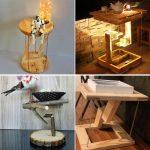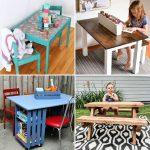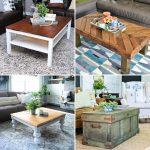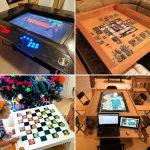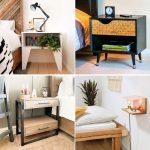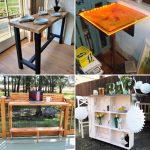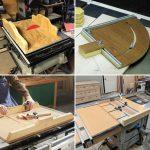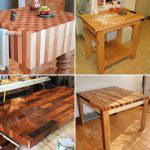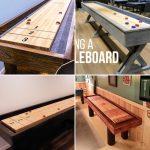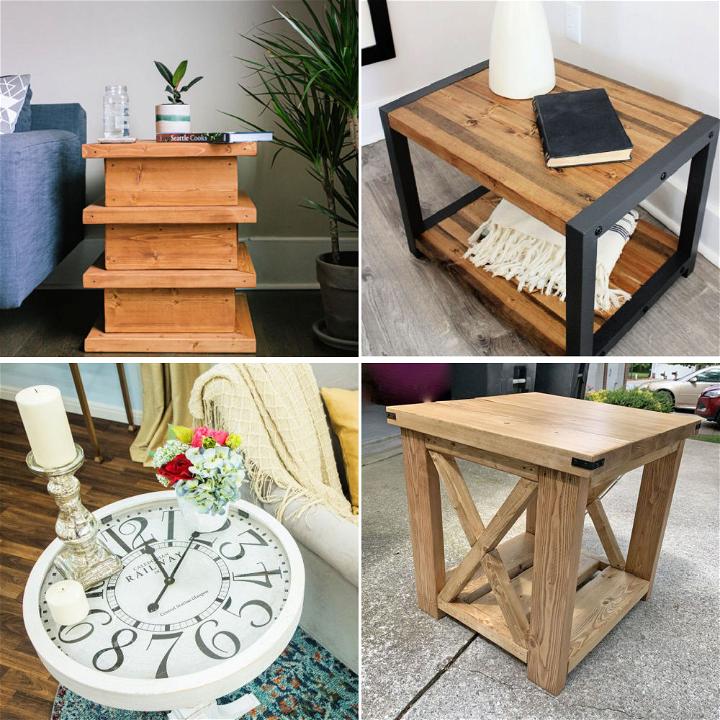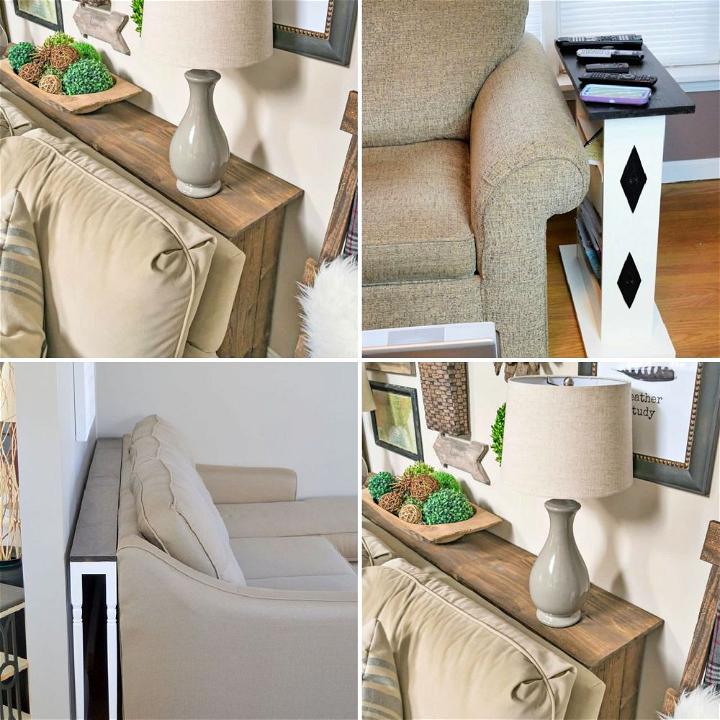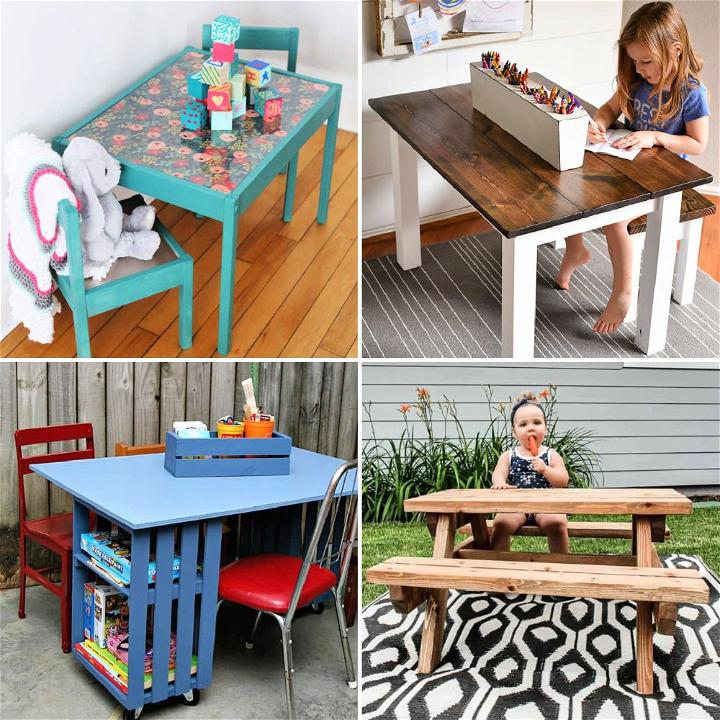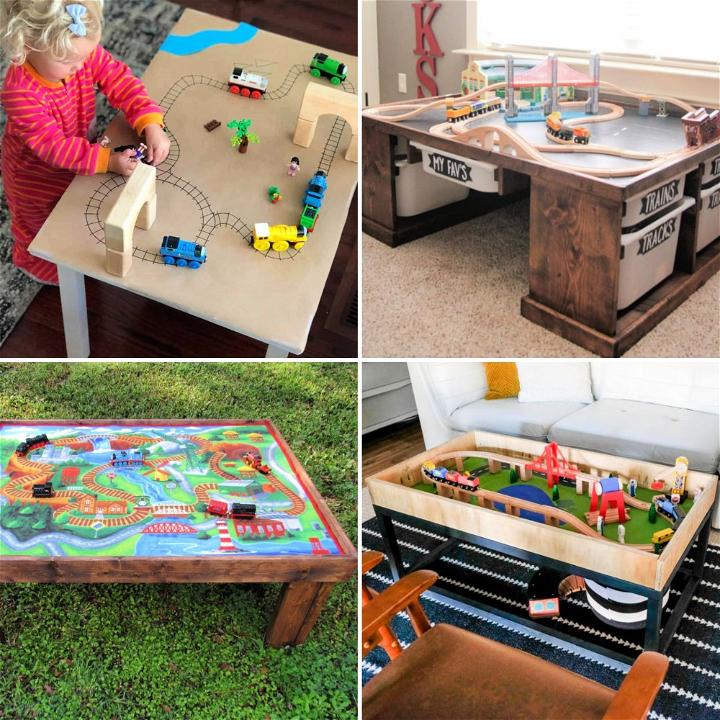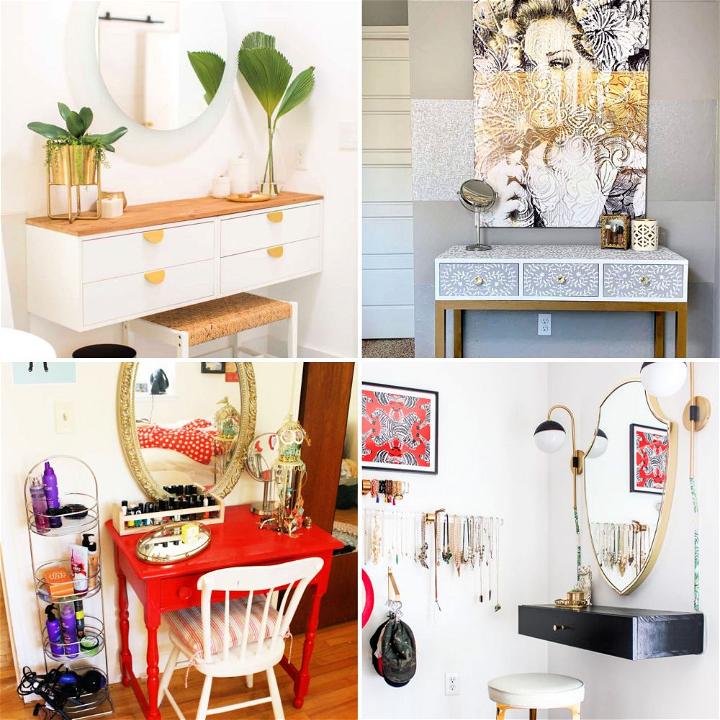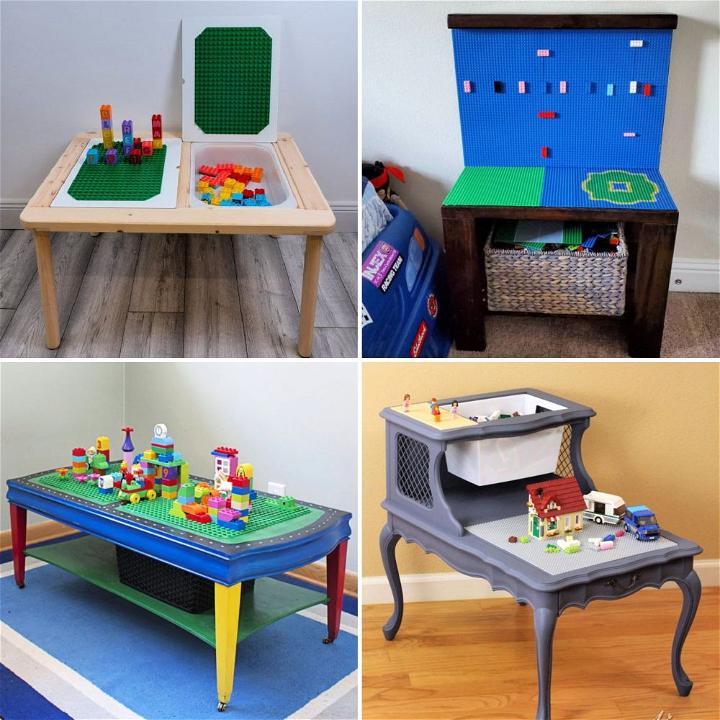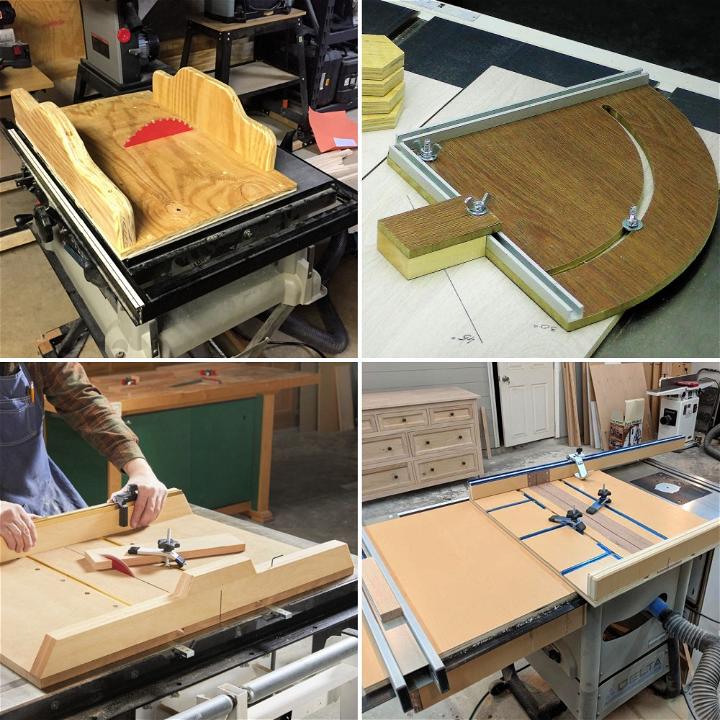Sensory play is a vital part of childhood development. It involves activities that stimulate a child's senses, helping them to learn and grow. Let's explore why sensory play is essential and how it benefits children.
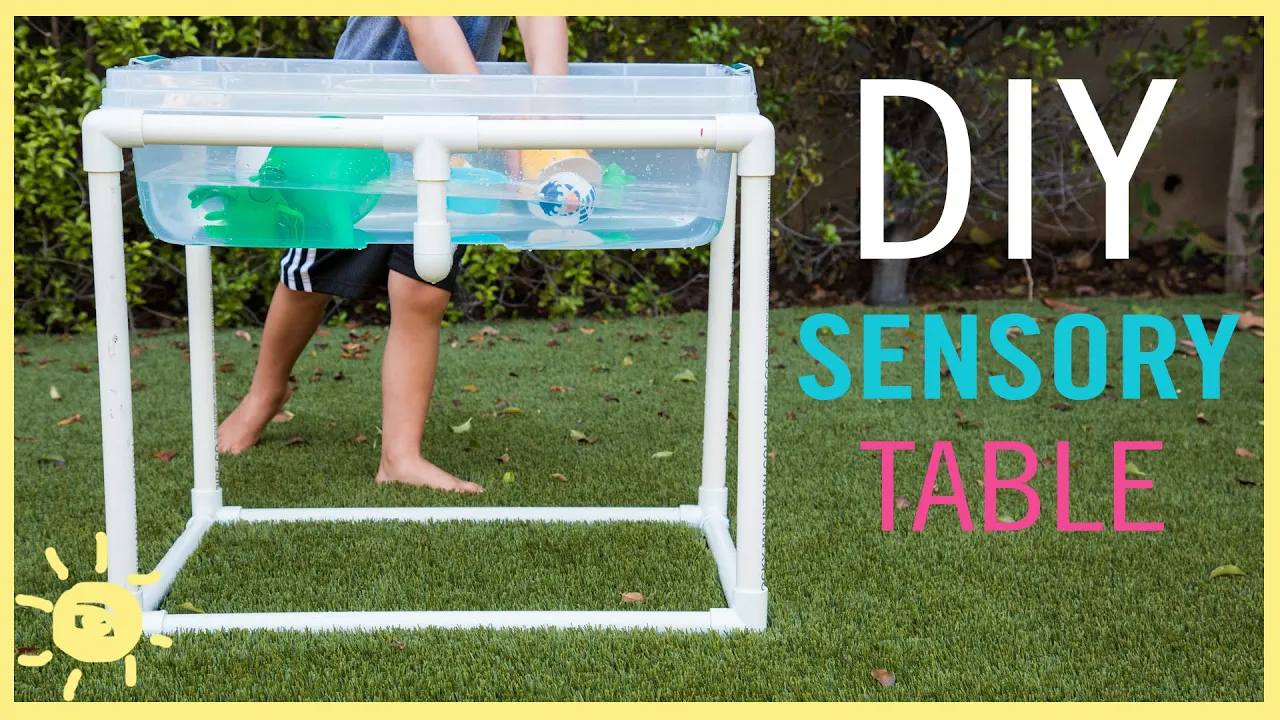
What is Sensory Play?
Sensory play includes any activity that engages a child's senses of touch, smell, taste, sight, and hearing, as well as their sense of movement and balance. It can range from playing with sand or water to exploring different textures with their hands.
Why Sensory Play Matters
- Develops Cognitive Skills: Sensory play helps build nerve connections in the brain, which are crucial for a child's ability to complete more complex learning tasks. As children interact with different materials, they learn about cause and effect, and they start to understand their environment better.
- Enhances Communication: Through sensory play, children learn new ways of expressing themselves and describing their experiences. This interaction boosts their language development, helping them to use more descriptive words and communicate effectively.
- Improves Physical Abilities: Activities like scooping, pouring, and molding strengthen fine motor skills. These are important for daily tasks such as tying shoes, writing, and using utensils.
- Supports Social and Emotional Development: Sharing sensory play experiences with others helps children learn about cooperation and builds their social skills. It also allows them to express their feelings and become more empathetic.
- Stimulates Sensory Integration: Sensory play aids in the development of sensory integration, which is the process by which the brain organizes and interprets information. This is especially beneficial for children with sensory processing issues.
How to Build a Sensory Table - Step by Step Guide
Learn how to build a sensory table with this step-by-step guide. Make a fun and engaging sensory experience for children at home or in the classroom.
What Will I Get Out of This?
By following this guide, you'll learn how to build a durable and portable water table with readily available materials. This project solves the problem of finding the perfect outdoor or indoor activity for toddlers and young children, offering a sensory play experience that can be easily adapted for water or sand play. Moreover, this DIY project empowers you to build a play area that can foster your child's development and ensure fun learning.
Necessary Materials
- PVC Pipe (¾ inch, approx. 19 feet) - The skeleton of the water table, providing durability and easy customization.
- Three-Way Elbow Connectors (8) - For joining the PVC pipes at corners and for the base and top frame.
- T Connectors (2) and Elbow Connectors (2) - These help in adding stability and shaping the frame.
- A Large Plastic Bin (40 gallons recommended) - Serves as the basin for the water or sand, making it the main play area.
- PVC Pipe Cutter - For customizing the PVC pipe lengths according to the desired size of the water table.
The quantities and sizes specified ensure that the table is of a convenient height for toddlers and preschoolers, offering easy accessibility while being sturdy enough for active play.
Step by Step Instructions
Step 1: Cutting the PVC Pipe
Mark and cut the PVC pipe into the following lengths: two 21-inch, four 10-inch, five 14.5-inch, four 16-inch, and two 3.5-inch pieces. This step lays the foundation for a stable and size-appropriate table.
Step 2: Assembling the Base
Use two 21-inch and two 14.5-inch pieces to build a rectangle, joining them with four three-way connectors. This forms a stable base for the table.
Step 3: Constructing the Top Frame
Join two 10-inch pieces with a T connector and repeat for another set. Connect these sets using the remaining three-way connectors to replicate the base frame. This will support the plastic bin and ensure it's securely held.
Step 4: Adding Stability
For added support, insert the 3.5-inch pieces into the T connectors and attach an elbow connector to each end. Place the last 14.5-inch piece in the middle. This stabilizer bar prevents the frame from wobbling during play.
Step 5: Final Assembly
Attach the four legs (16-inch pieces) to the base, then connect the top frame. Ensure everything is tightly secured. Your PVC frame is now complete.
Personalization and Troubleshooting
- Variations: Consider painting the PVC frame for a personalized touch or to match outdoor decor. Just make sure to use child-safe, waterproof paint.
- Common Pitfalls: Ensure all PVC cuts are straight to avoid assembly issues. If the table wobbles, check that all connections are tight and that the ground is level.
- Storage Solution: The water table can be disassembled for compact storage. Alternatively, design a cover to protect the table between uses.
Video Tutorial
Want a visual demonstration? Watch a step-by-step video tutorial on YouTube for an additional perspective on building your DIY water table. It provides a clear and easy-to-understand walkthrough of the techniques, making it a great companion to this written guide.
Building a DIY water table not only offers a fun and educational play option for your children but also brings the satisfaction of making something valuable for your family. By following these steps and tips, you will have a versatile play area that encourages creativity, exploration, and hours of enjoyment.
25 DIY Sensory Table Ideas and Inspirations
Discover 25 easy DIY sensory table ideas for kids to explore textures, colors, and more. Get inspired with these sensory play activities!
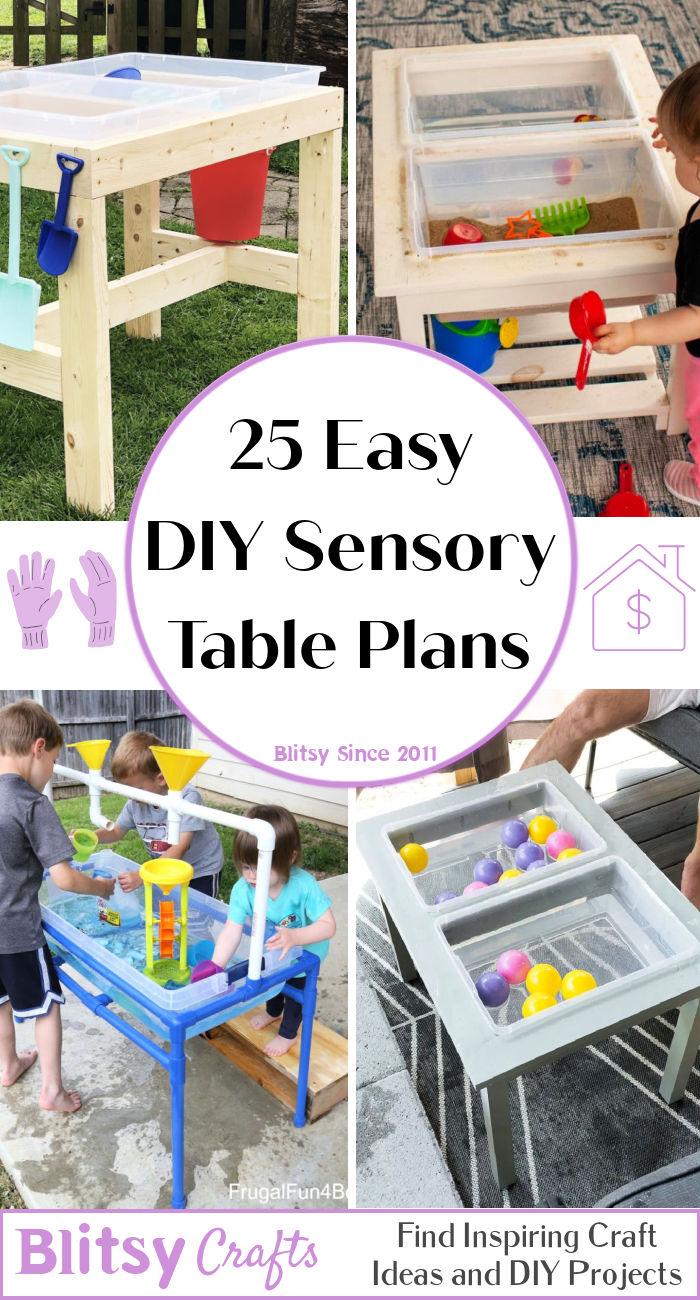
1. Make a PVC Pipe Sensory Table
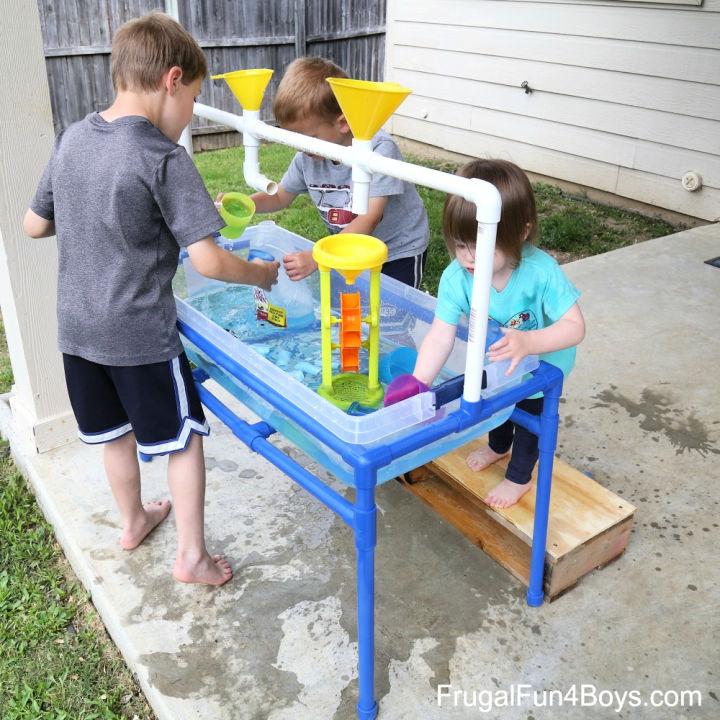
Making a PVC pipe sensory table introduces an affordable, lightweight option for engaging play. Its design promotes easy assembly and portability, making it ideal for stimulating children's senses both indoors and outdoors.
2. DIY Water Sensory Table for Boys
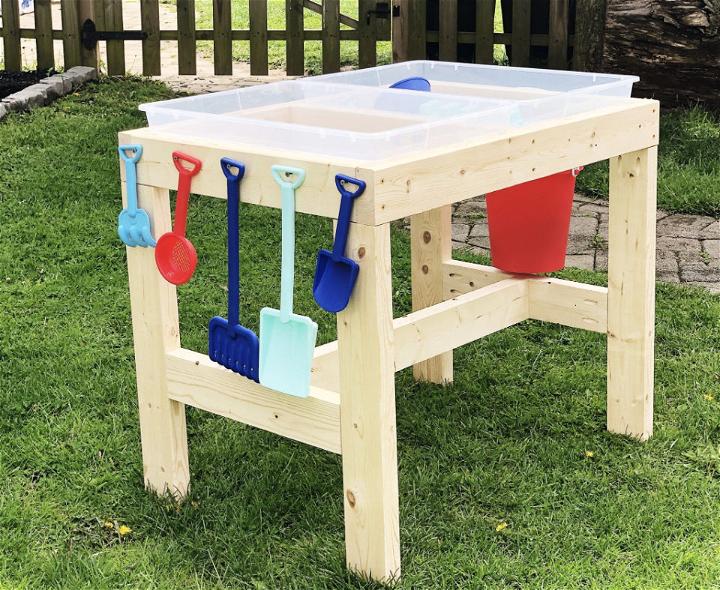
Building a DIY water sensory table can turn into a thrilling project, perfectly tailored for adventurous young minds. Utilizing simple tools and materials, this table becomes a haven for exploration, encouraging hands-on learning and creativity.
3. Water Sensory Table from 2x4s
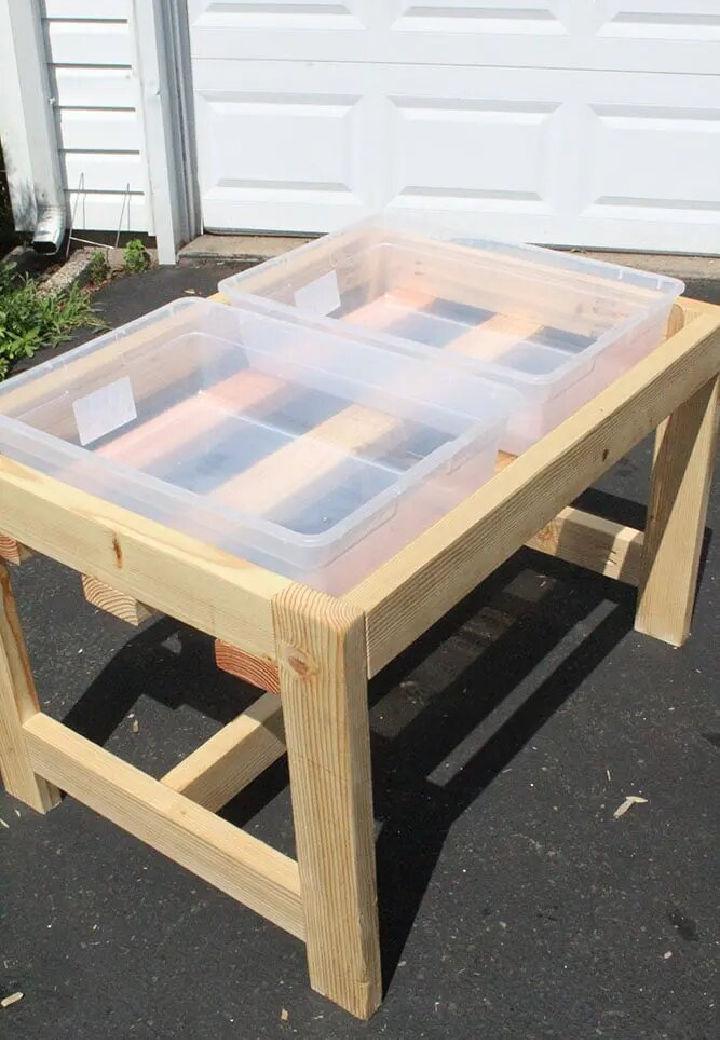
Constructing a water sensory table from 2x4s offers a sturdy and durable option for curious explorers. Its solid construction withstands the elements, making it a perfect outdoor fixture for year-round sensory activities.
4. Homemade Sensory Table Bin
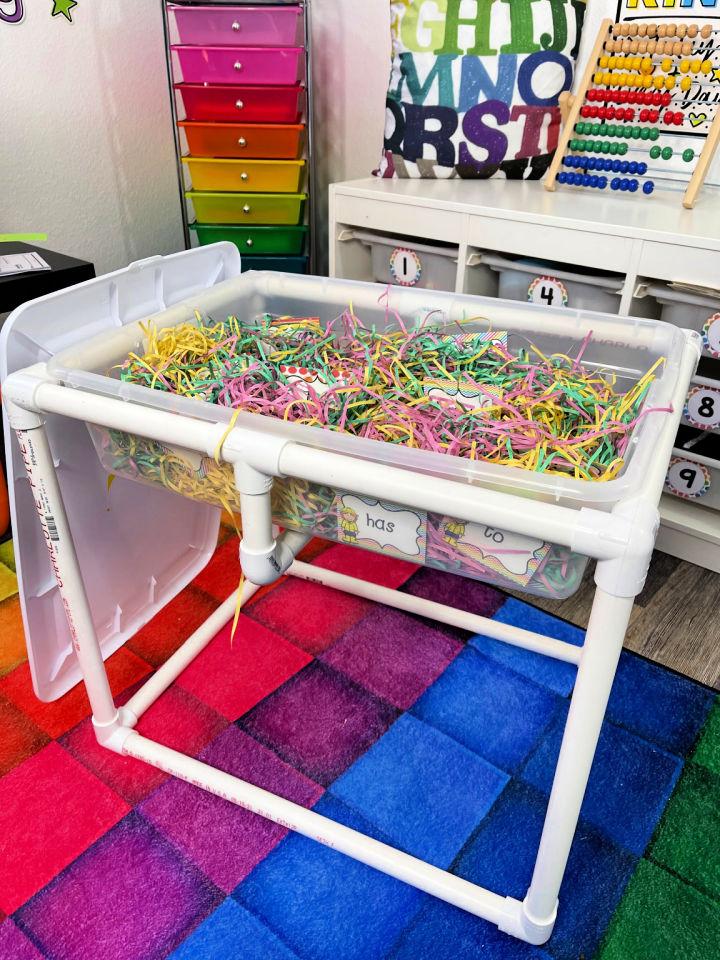
Designing a homemade sensory table bin is a straightforward and versatile project. By repurposing bins, you can develop a cost-effective, multi-use station for sensory play, fostering fine motor skills and imaginative play in a contained space.
5. Water Table with Beer Cooler Option
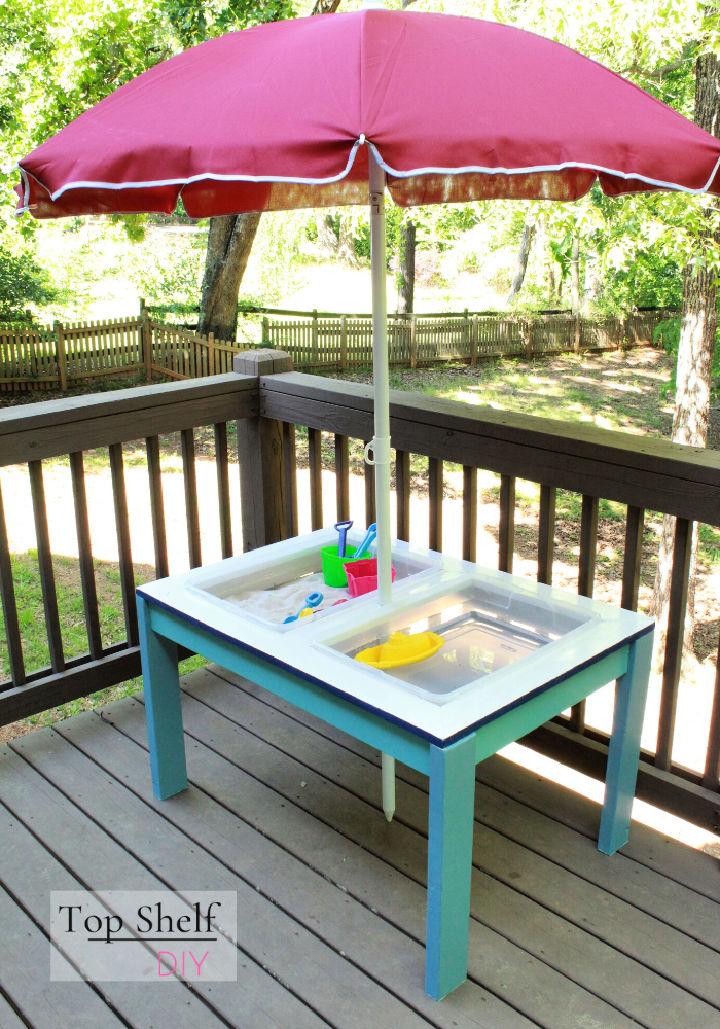
Innovating with a water table that doubles as a beer cooler presents an ingenious addition to any social gathering. This dual-purpose design not only entertains the kids but also serves as a conversation starter, blending fun with functionality.
6. DIY Outdoor Sensory Table
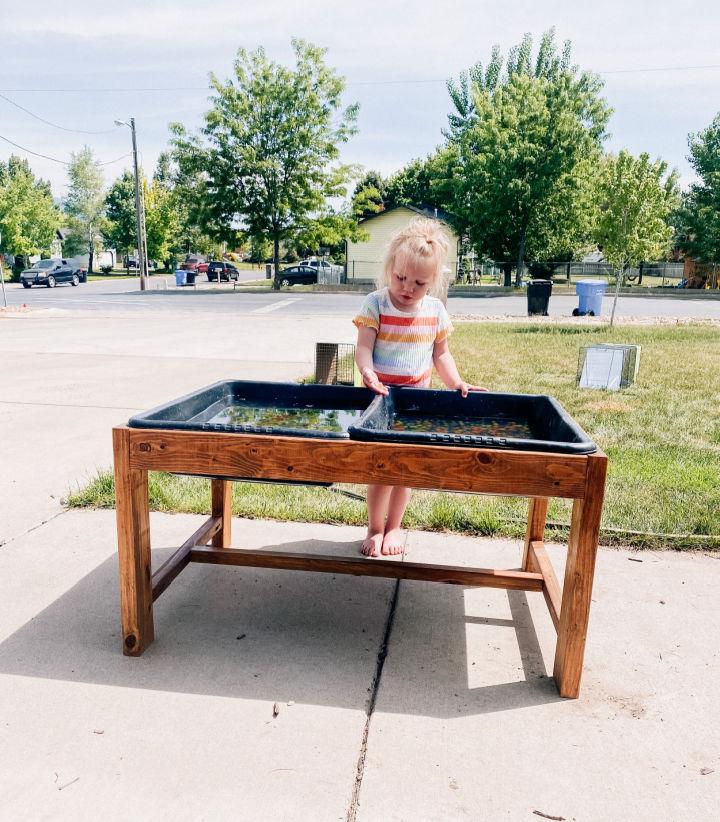
Erecting a DIY outdoor sensory table can be a rewarding endeavor, resulting in a robust play area that inspires curiosity and interaction with natural elements. Its outdoor adaptability invites exploration across seasons, enriching children's learning experiences.
7. Best Sensory Table for Kids

Identifying the best sensory table for kids hinges on versatility, durability, and educational value. Seek options that offer adjustable heights, varied sensory bins, and easy cleaning to ensure a stimulating, safe, and hygienic environment for discovery and play.
8. How to Make a Sensory Bin Table

Building a sensory bin table is a creative journey toward customizing an engaging play zone. By integrating various compartments and textures, this project can cater to individual sensory needs, promoting an inclusive setting for exploration.
9. Cheap and Fun PVC Sensory Table

Imagine delighting your kids with a budget-friendly, DIY sensory table made of durable PVC. This clever design allows for both indoor and outdoor exploration, encouraging tactile learning through play.
10. Making a Water Table for Toddlers

A DIY water table offers toddlers hours of splashy fun and learning. Its simple construction and water-based activities aid in sensory development, making it an essential summer backyard addition.
11. Sensory Table From Old Coffee Table

Repurposing an old coffee table into a sensory table is not just eco-friendly, but also a creative project. This redesign fosters a unique learning area for sensory play, blending aesthetics with functionality.
12. DIY Sand and Water Sensory Table
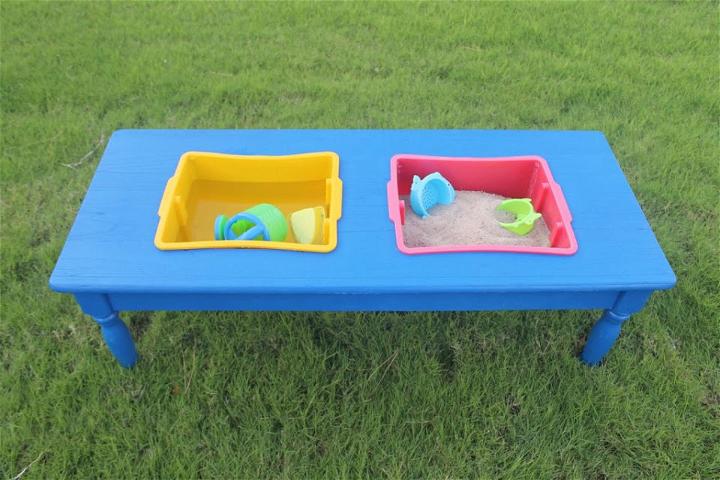
Making a sand and water sensory table introduces a dual-element play experience, perfect for simulating natural environments. This versatile setup promotes imaginative and sensory play, enhancing fine motor skills.
13. Make Childrens Sensory Table

A homemade sensory table provides a personalized touch to children's playtime. By carefully selecting the specific materials and themes for your project, you have the opportunity to design a one-of-a-kind exploration station that not only ignites curiosity but also fosters the development of essential skills in individuals of all ages and backgrounds.
14. Make Your Own Sensory Table Using Side Table

Converting a simple side table into a multi-functional sensory table is an incredibly innovative way to maximize space in a room. This approach offers a quick and easy solution to add an educational PlayStation to any room, encouraging hands-on learning.
15. DIY Sensory Table That Looks Like a Manger
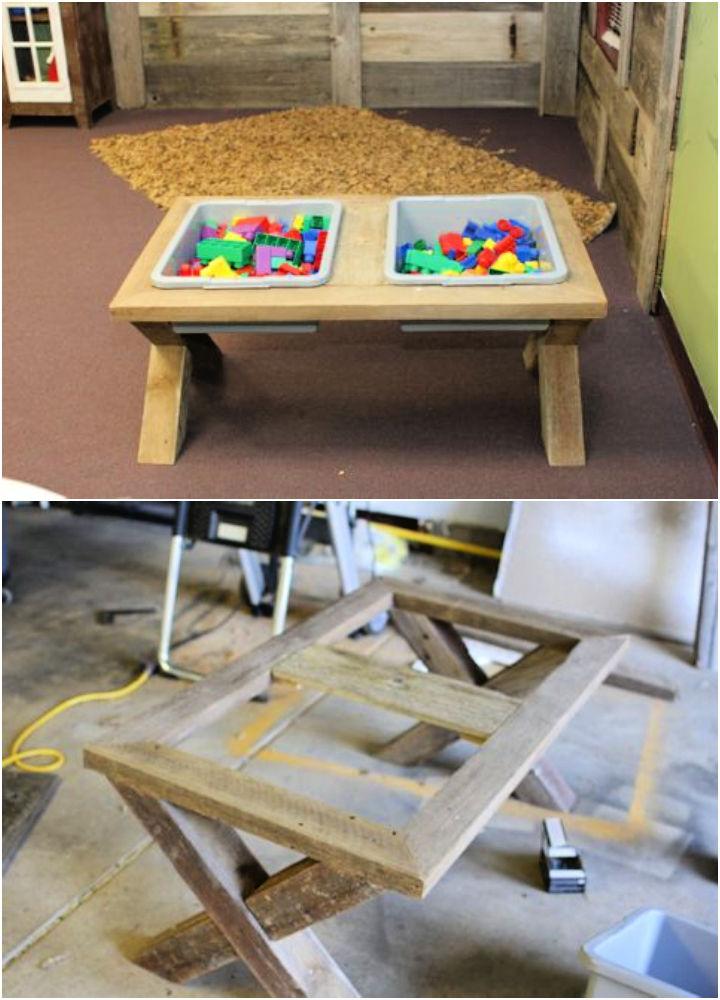
For those seeking a thematic project, crafting a sensory table that resembles a manager can be a rewarding endeavor. This simple design not only stimulates sensory exploration but also adds a festive touch to playtime activities.
16. How to Build a Sensory Table Less Than $15

Achieving a functional sensory table on a tight budget is entirely possible. With affordable materials and a bit of creativity, you can construct a stimulating play area that doesn't break the bank while fostering child development.
17. Toddler Sensory Play Table
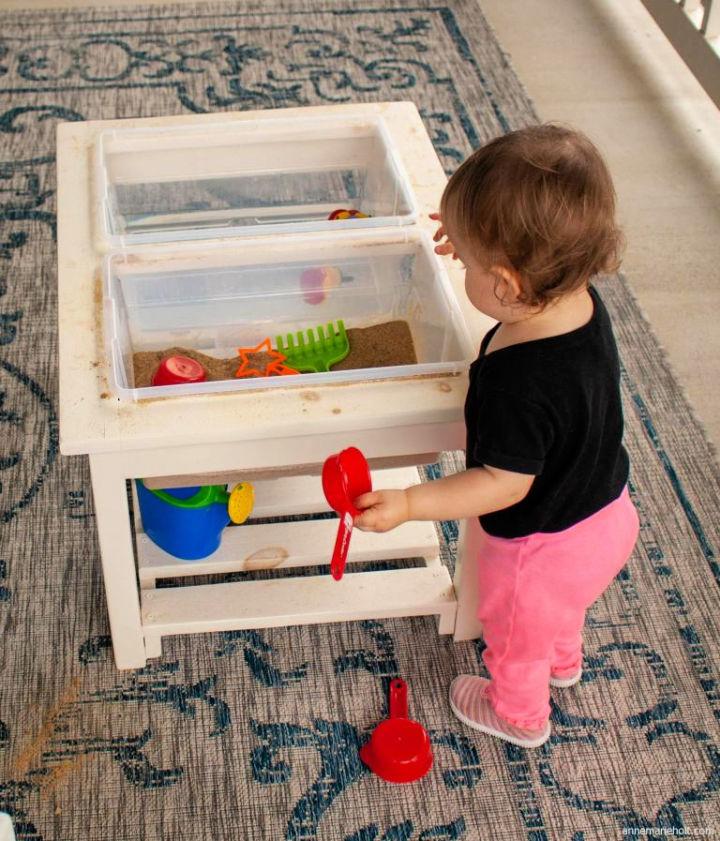
A dedicated sensory play table for toddlers encourages early learning through exploration. Its timeless design, specifically buildd for toddlers, guarantees a secure experience when engaging with a wide range of textures and materials, ultimately enhancing cognitive abilities and physical coordination.
18. Simple and Inexpensive Sensory Table

Starting with a straightforward design, a simple and inexpensive sensory table serves as an effective learning tool. This cost-effective project proves that you don't need expensive equipment to provide valuable sensory play experiences.
19. DIY IKEA Sensory Table Hack
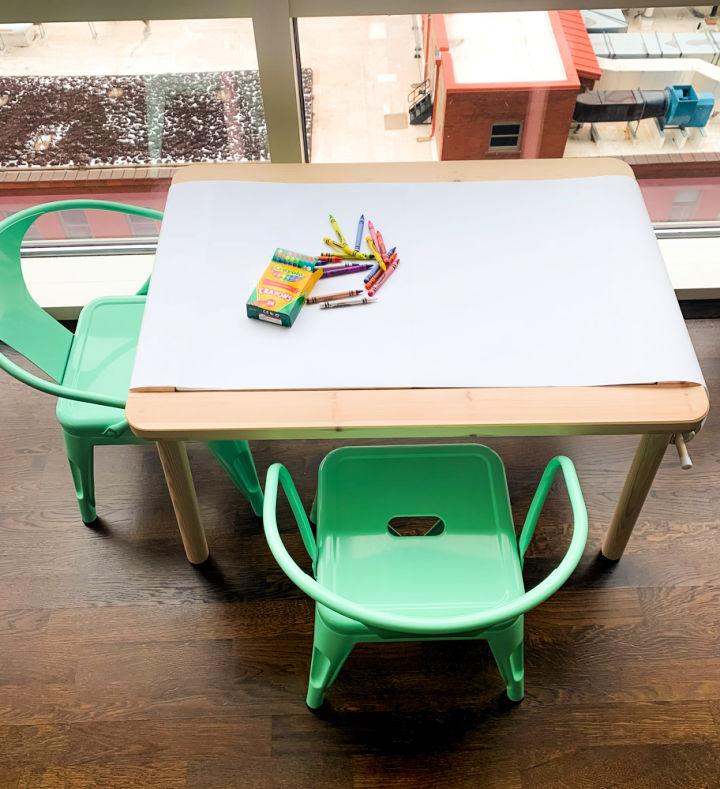
Transform an ordinary IKEA table into a wonderland of exploration with a DIY sensory table hack! This innovative project enhances children's sensory skills by offering a customizable play area. Easily assembled with everyday IKEA finds, it's a cost-effective, adaptable feature for any playroom, fostering creativity and fine motor development.
20. Wooden Sensory Table Plan
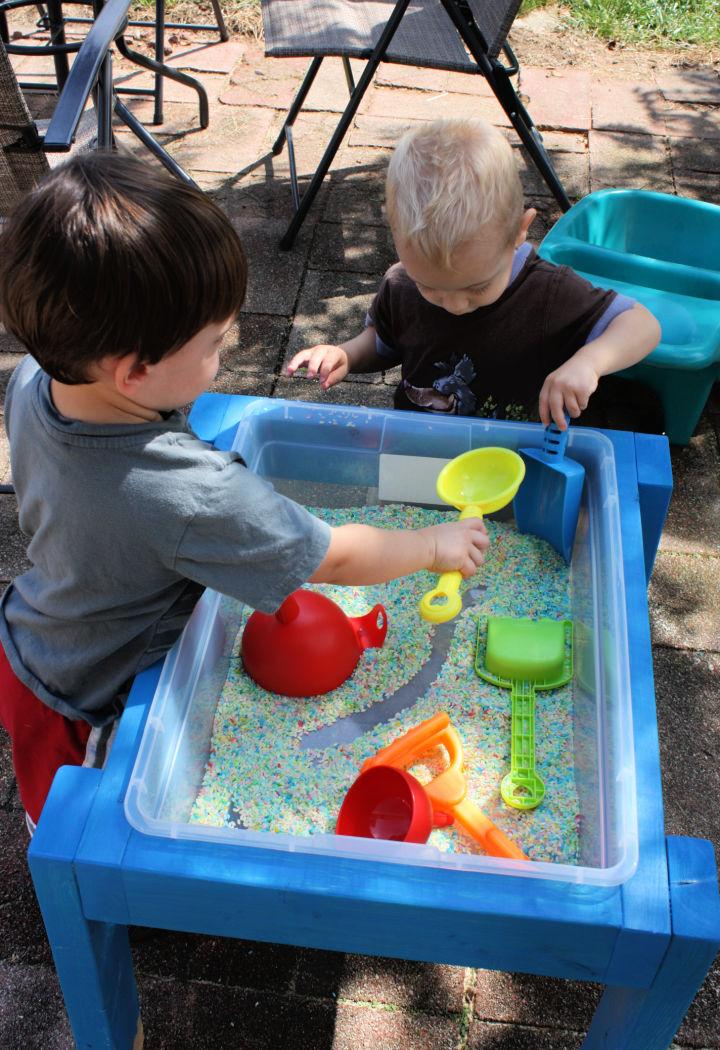
Making a wooden sensory table brings a touch of nature into playtime. These tables, famed for their durability and eco-friendly design, encourage tactile exploration among children, fostering early development skills. Their natural aesthetic seamlessly blends into any play space, making them an enduring choice.
21. Sensory Table With Removable Tabletop
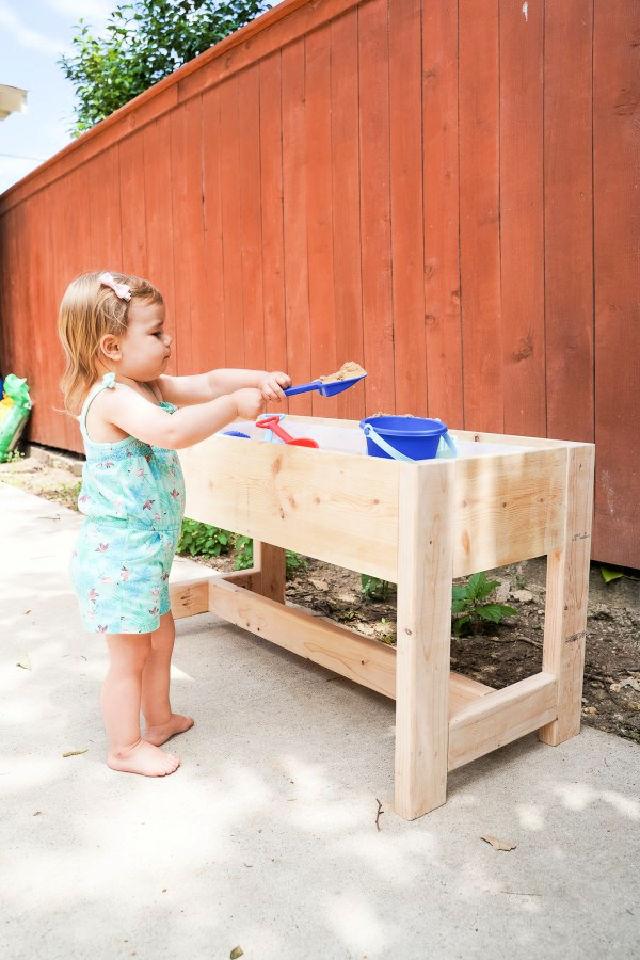
A sensory table with a removable tabletop offers unparalleled versatility and easy clean-up. This innovative feature allows for quick changes between different sensory experiences, ranging from water play to kinetic sand, making it a fantastic choice for keeping playtime fresh and engaging.
22. DIY Sensory Table Easy Weekend Project

Diving into a DIY sensory table project over the weekend? It's a rewarding endeavor! With basic materials and a sprinkle of creativity, you can tailor a sensory haven perfectly suited to your child's preferences. It's an affordable way to provide endless hours of explorative fun.
23. Make a Sensory Table Out of PVC Pipe
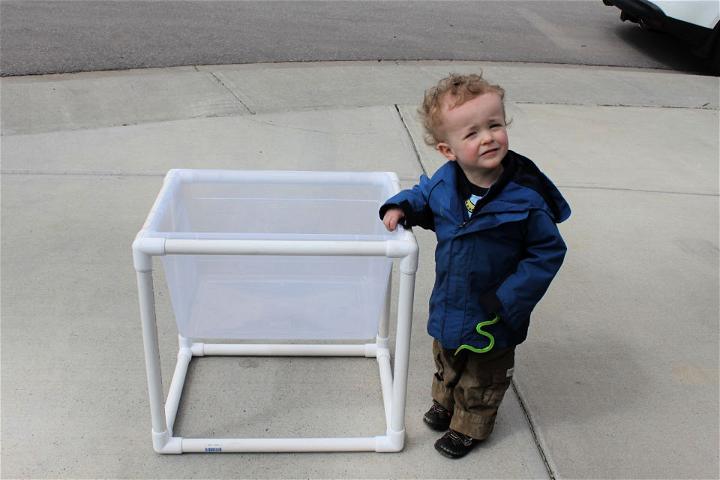
Utilizing PVC pipes to build a sensory table is a stroke of genius for the budget-minded and space-savvy. This lightweight, yet sturdy, table allows for easy assembly and mobility. It's a fantastic project that proves you don't need fancy materials to craft a fun, functional play area.
24. Homemade Sand and Water Play Table
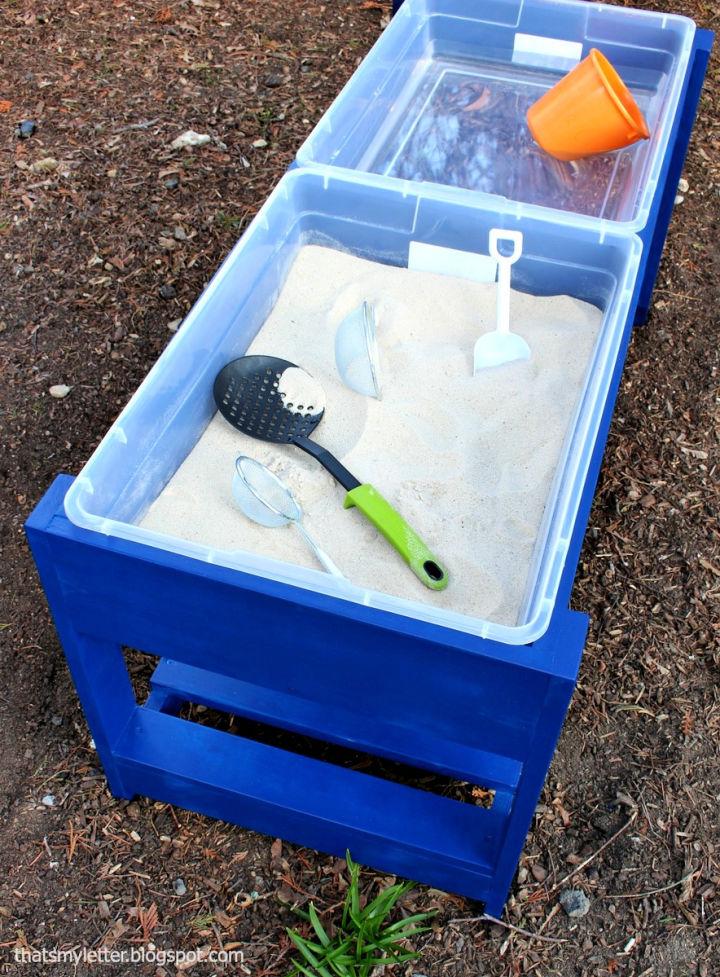
A homemade sand and water play table is a dual threat in the world of sensory play. It satisfies kids' natural curiosity to dig and splash, enabling a hands-on learning experience. Crafting one yourself adds a personal touch that can't be bought, enhancing backyard adventures.
25. How to Build a Wooden Sensory Table

Building a wooden sensory table yourself is not just a project but a heartfelt gesture toward making a meaningful play space for children. With some woodworking basics and safe, kid-friendly materials, you can construct a robust table that holds up to the wildest of imaginations, offering a platform for varied sensory activities.
Conclusion:
In conclusion, building a DIY sensory table is a fun and rewarding project that can benefit children's sensory development. By following the steps outlined in this guide, you can build a custom sensory table that meets your child's needs and preferences. Enhance playtime and learning experiences with this homemade sensory table that provides endless opportunities for exploration and creativity. Start building your DIY sensory table today!



